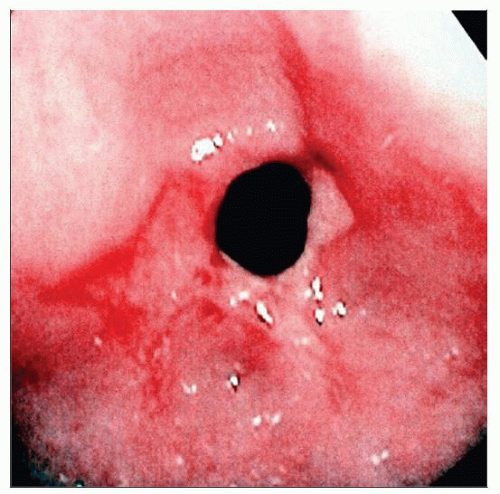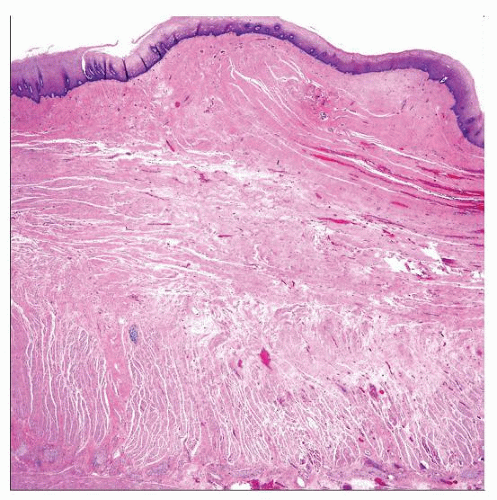Corrosive Damage (Lye)
Elizabeth A. Montgomery, MD
Key Facts
Terminology
Lye injury, caustic injury
Damage to esophagus caused by accidental or purposeful ingestion of caustic substances
Clinical Issues
Common in children
More common in boys
Fewer cases in North America since initiation of “childproofing” measures
Subset of injuries result from suicide attempts
Patients at life-long risk for development of squamous cell carcinoma
Risk estimated at 1000x
Long latency until development of cancer
Microscopic Pathology
Biopsies must be assessed for squamous neoplasia
Full-thickness scarring corresponds to clinical strictures
 Intraoperative photograph taken during upper endoscopy shows deep ulcers in a patient who had ingested household bleach. |
TERMINOLOGY
Synonyms
Lye injury, caustic injury
Definitions
Damage to esophagus caused by accidental or purposeful ingestion of caustic substances
CLINICAL ISSUES
Presentation
Common in children
Mean age: 3-4 years
Typically children ingest caustic substances accidentally
Occasionally caregivers unintentionally administer caustic substances
More common in boys
About 60% of patients are male
Subset of injuries result from suicide attempts
Common caustic substances depend on location
In large Chinese study, often result of ingesting caustic soda used in chafing dishes
In large Turkish study, most common ingestions
Concentrated bleach
Oven cleaner
Toilet bowl cleaner
Lime solvent
Drain cleaner
Stay updated, free articles. Join our Telegram channel

Full access? Get Clinical Tree



